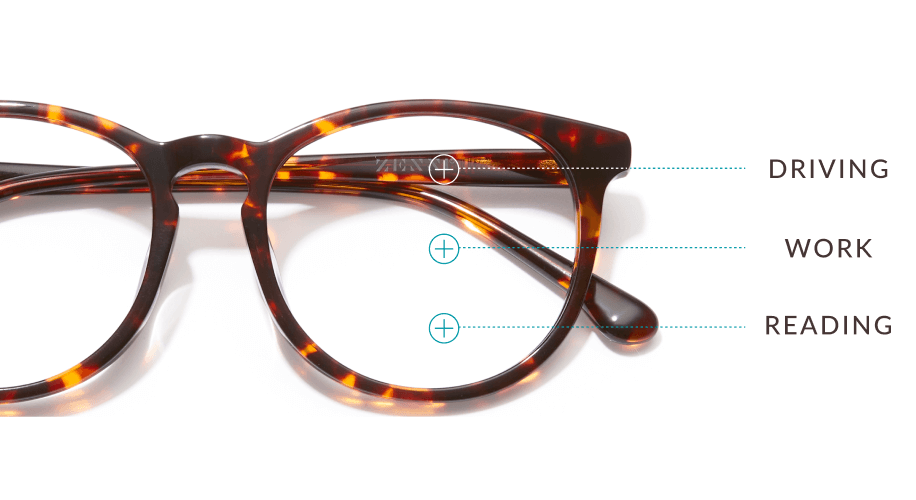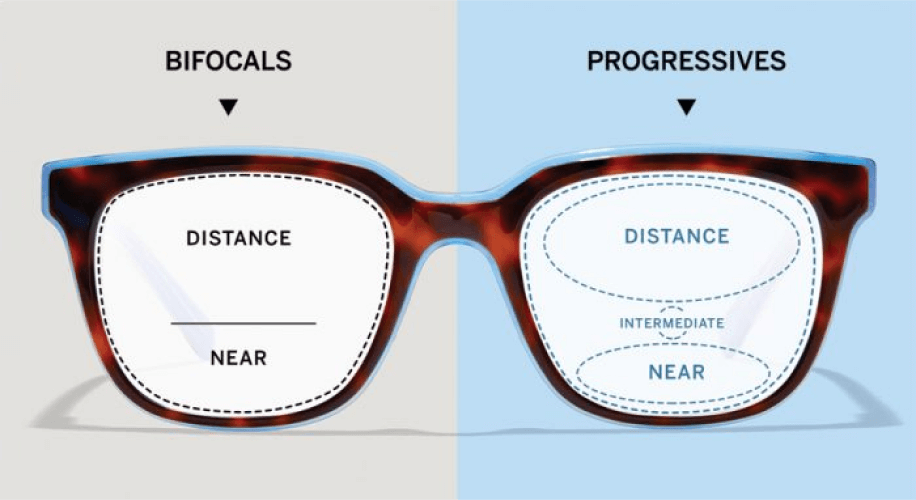Progressive Reading Glasses Explained | Zenni

When it comes to eyewear, there’s no one-size-fits-all solution. From sports sunglasses to cheap prescription glasses, there are countless styles to suit different needs and preferences. Among these myriad options, a particular type, progressive reading glasses, garners significant interest. This guide will take a closer look at progressive reading glasses, how they work, their benefits, and how to determine if they’re the right choice for you.
What are Progressive Reading Glasses?
Progressive reading glasses, also referred to as no-line bifocals, are a type of eyewear designed to correct presbyopia, a condition that typically develops with age, resulting in difficulty focusing on close objects. Unlike traditional bifocals or trifocals, which have visible lines separating different viewing fields, progressive lenses provide a seamless transition.
- Progressive lenses are distinct with their multi-focal points that help correct vision at varying distances. The top part is for seeing objects far away, the middle section aids in viewing objects at arm’s length, such as a computer screen or a book, and the bottom part is for reading and other close-up work.
- Progressive lenses eliminate the need for multiple pairs of glasses. Whether you’re driving, working on your computer, reading, or doing any other tasks, you can do so using just one pair of glasses.
- Premium Progressive Lenses offer a more natural and comfortable viewing experience. There’s no need to shift your head position when transitioning between different viewing distances, and they also provide a wider field of vision compared to standard progressives, bifocals or trifocals.

Are Progressive Reading Glasses for You?
Deciding on the right eyewear can be a daunting task, especially with the vast array of styles, such as men’s reading glasses and pink sunglasses. However, if you are experiencing presbyopia or need correction for both near and far vision, progressive lenses could be the ideal solution. Here are some factors to consider:
- Age: Presbyopia typically starts affecting people around the age of 40. If you’ve noticed a need to hold reading materials further away to see clearly, this could be an indication that progressive lenses might be beneficial.
- Lifestyle: If your daily activities require switching between different pairs of glasses, or lifting up your distance glasses to read from under them, progressive lenses can make your life easier by offering multiple viewing fields in a single pair.
- Comfort: If you find traditional bifocals or trifocals uncomfortable due to the abrupt change in focus, progressive lenses provide a smoother transition.
Choosing the Right Progressive Reading Glasses

Once you’ve decided on progressive reading glasses, the next step is picking the perfect pair. Keep in mind that best-selling glasses may not necessarily be the best for everyone. It is essential to consider factors like frame size, material, and lens type. Check out this video for the best frames for progressives At Zenni Optical, we provide a wide range of frames and lenses to ensure you find a pair that not only corrects your vision but also fits your style and budget. We’re here to help guide you through this process, making eyewear shopping a breeze.
About the Author: Dr. Steven Lee
Dr. Steven Lee is a visionary leader in the eye care and telemedicine sectors and has built a remarkable career by combining his formal training in eye care, engineering expertise, and a passion for innovation. Dr. Lee serves as Zenni’s the Head of Optical Product.


 Canada
Canada